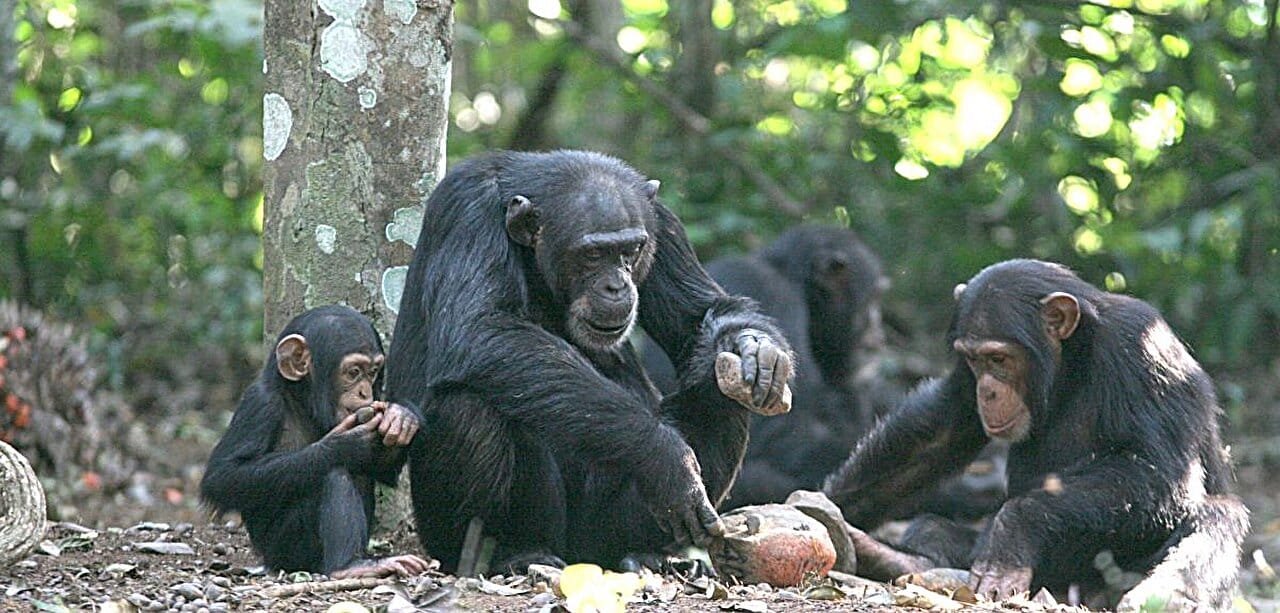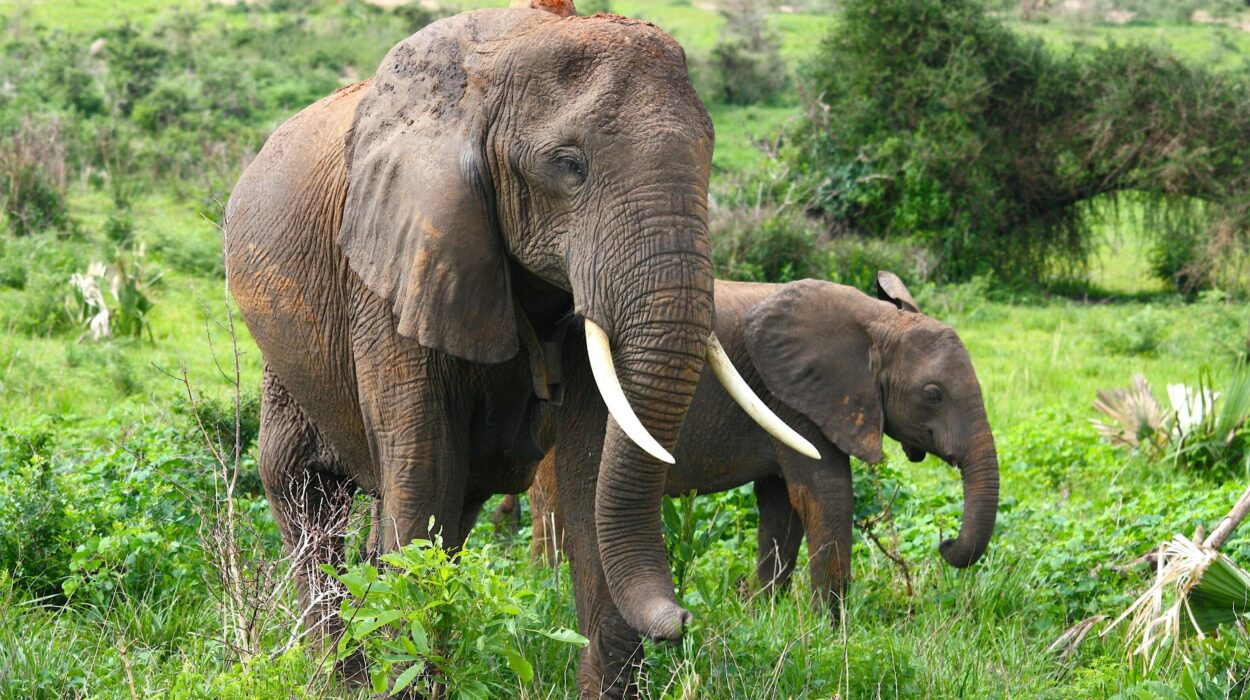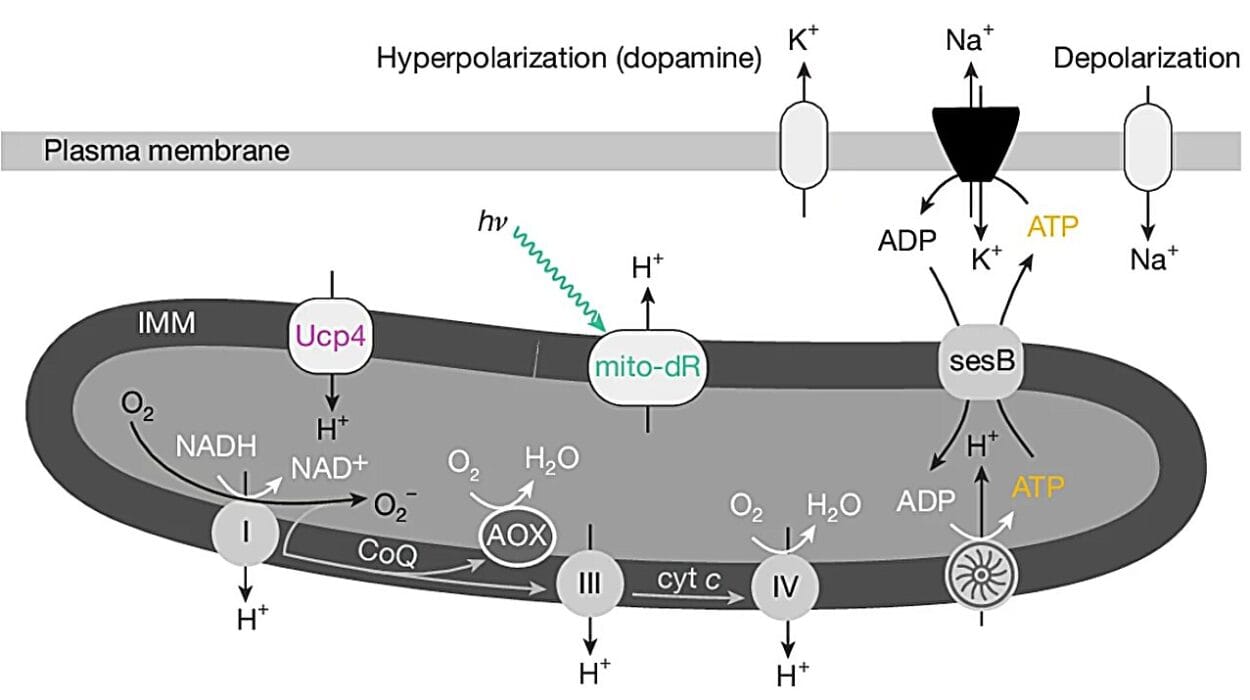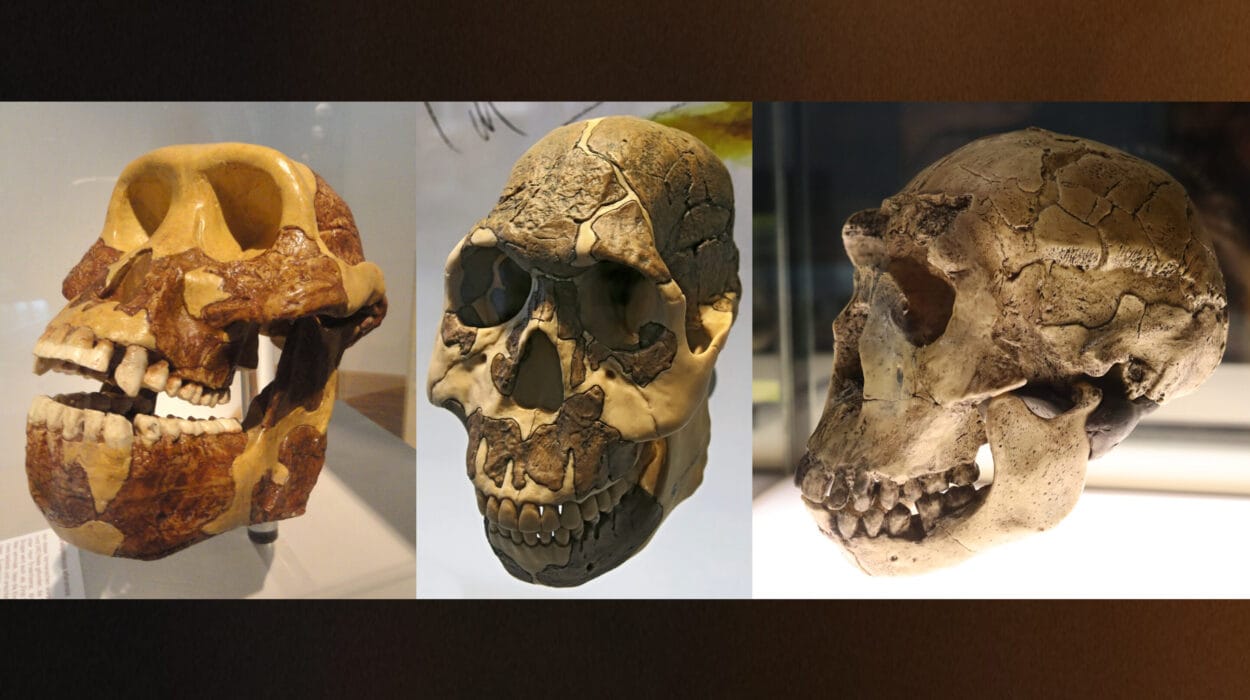Deep within the dense, whispering canopy of the Bossou forest in Guinea, a stone strikes against a hard nut. The sound echoes—a rhythmic tap-tap—followed by a sharp crack. It’s a familiar melody, one that generations of wild chimpanzees have composed in these woods. This ritual of cracking open oil palm nuts with stone hammers and anvils is more than just feeding; it is culture, technology, and tradition wrapped into one simple act.
But now, the rhythm is changing.
New research led by scientists at the University of Oxford has uncovered a quiet transformation in these forest communities. As wild chimpanzees age, their relationship with tools—once sharp, purposeful, and practiced—begins to shift. Some still crack with the same precision as in their youth. Others slow, hesitate, fumble. A few step away entirely, fading gently from a role they once performed with ease.
This study, published in the journal eLife, opens a rare window into how aging affects the minds and bodies of our closest living relatives—not in sterile lab cages, but in the wild, where life is complex, social, and deeply real.
Tools, Tradition, and the Chimpanzee Mind
Tool use in animals is rare. Among all living creatures, only a handful have been observed crafting or manipulating tools in the wild, and even fewer do so with the cognitive sophistication of chimpanzees. Cracking a nut may seem like a simple act, but it requires a remarkable convergence of brain and body. The chimpanzees must recognize the nut, assess its hardness, select the right stones, position them carefully, and strike with both force and control.
These aren’t instincts—they’re skills learned over time. Skills passed down by watching, imitating, and practicing. In Bossou, this tradition forms part of what scientists call a chimpanzee “cultural repertoire”—a set of shared behaviors passed through generations, not unlike how human children learn to bake bread or play music by observing their elders.
Dr. Elliot Howard-Spink, the study’s lead author, now at the Max Planck Institute of Animal Behavior in Germany, explains: “Tool use is uncommon among animals, possibly because it requires a suite of physical and cognitive abilities, such as planning, fine motor coordination, understanding causal relationships, and identifying physical properties of objects in the environment. Given many of these faculties can be impacted by aging, animals’ tool-use behaviors could be vulnerable to decline with old age.”
The idea is intuitive—humans, too, can feel the slip of aging hands or the pause of memory—but until now, no one had systematically studied how old age changes tool use in wild chimpanzees. And because wild apes are notoriously difficult to study over long periods, the answer had remained elusive.
A Seventeen-Year Laboratory Without Walls
In the heart of the forest, researchers created an “outdoor laboratory”—a quiet, open space where chimpanzees could come and go as they pleased, and where stones and nuts were always available. Over 17 years, scientists observed five chimpanzees—four females and one male—as they aged from around 40 to over 60 human-equivalent years. That kind of longitudinal insight is almost unheard of in wild animal research. And what it revealed was both expected and startling.
With each passing year, the elderly chimpanzees began to appear at the outdoor lab less frequently. Their visits grew shorter. Their engagement with the stones and nuts became more reserved. In some cases, they stopped cracking nuts entirely.
When they did attempt the task, the change was visible. Movements that were once confident now appeared slower. Selecting the right stone took longer. Cracking a single nut required more strikes, more corrections. Efficiency faded—not across the board, but unmistakably.
And yet, not all were affected equally. Some individuals retained much of their skill well into old age. They continued to crack with precision, making the task look deceptively simple. Others withdrew more quickly, either struggling or silently opting out.
Aging Like Us
This variation, say the researchers, mirrors the human experience in a poignant way. In human societies, aging doesn’t follow a straight line. Some people remain vigorous and mentally sharp well into their nineties. Others experience early cognitive or motor decline. What matters isn’t just time, but how each life has been lived: the physical health, the mental engagement, the social connections, the history of practice.
Professor Dora Biro, a senior author on the study, notes: “Since this was an observational study, we cannot say for sure yet what precisely is leading to these changes in tool-use with aging—an area for future research. Another ongoing question is whether the level of skill attained in early life, and the amount of practice, determines how well these behaviors are maintained over an individual’s lifetime.”
It’s a tantalizing idea. Just as a pianist who practiced daily in youth might still play sonatas in old age, so too might an elder chimp who spent more time cracking nuts retain the skill longer. If this proves true, it could mean that not only do chimpanzees pass culture through generations—they may also maintain or lose it based on how much they’ve engaged with it across their lifespan.
More Than Just Muscle
It would be easy to assume that the changes seen in elderly chimpanzees are purely physical—slower movements, weaker muscles, stiffer joints. But the picture is more complex. Nut cracking is as much about mind as it is about body. It requires memory, decision-making, attention to detail, and perhaps even motivation.
As chimps age, their brains—like ours—may become less nimble at handling complex sequences. They may find it harder to maintain focus or to adjust technique when things go wrong. They might experience frustration, fatigue, or simply a loss of interest in a task that once held joy or necessity.
The fact that some older chimps still perform at a high level suggests that the process of cognitive aging, just like in humans, varies across individuals. This opens new doors into understanding what shapes aging itself—genetics, environment, practice, or perhaps all three.
A Glimpse Into Ancient Hands
The implications of this research ripple backward as well as forward. Wild chimpanzees are the closest living relatives to humans, and their behaviors offer clues to how our own ancestors might have lived. If aging affected the technological skills of early hominins, it could have shaped who foraged, who taught, who created tools, and who passed on cultural knowledge.
By observing aging chimpanzees withdraw from tool use, scientists begin to envision what aging might have meant tens of thousands of years ago, when ancient humans chipped stone into blades, built fires, and hunted in groups. Perhaps elders played more social or teaching roles as they aged, stepping back from the physical tasks they once mastered. Perhaps some continued crafting until their final days.
Until now, these ideas have been largely speculative, because most studies of animal tool use ignore old age. But the Bossou chimpanzees offer a rare, living lens into this hidden chapter of evolutionary history.
Not Just a Decline, But a Transition
It’s easy to think of aging only as loss. But maybe it’s something more. Maybe the elderly chimpanzees of Bossou weren’t just losing skill—they were transitioning into different roles. Less active, perhaps, but no less important. In other primate species, older individuals often become repositories of knowledge, helping younger members learn the behaviors they’ve spent decades refining.
Perhaps the chimp who no longer cracks nuts still watches attentively as the young try and fail. Perhaps she offers subtle guidance—a look, a posture, a shared moment of attention. Perhaps the elderly male, slower now, becomes a model of patience and wisdom in a society built on learning through observation.
After all, tool use in chimpanzees isn’t just about getting food. It’s about communication, identity, and legacy. Just like in human hands, the tools they use are mirrors of who they are—and who they’ve been.
The Stones Tell Stories
Back in the forest, a young chimpanzee sits beside a weathered stone. His fingers wrap clumsily around it. He eyes the nut, raises the stone, and strikes. The nut wobbles. He tries again. And again. Above him, in the trees, an elder watches—not intervening, but present. Perhaps she once cracked thousands of nuts in this very clearing. Perhaps she remembers.
The stone doesn’t speak, but it remembers. It holds the echoes of generations, the quiet rhythms of tradition, and now, the changing patterns of age.
In the end, the stones remind us of something simple and beautiful: even in the animal world, aging is not the end of ability—it is a shift in the story. A story of learning, of fading, of passing on. A story that belongs not just to us, but to all those who carry culture, wisdom, and memory—no matter how wild their world may be.
Reference: Elliot Howard-Spink et al, Old age variably impacts chimpanzee engagement and efficiency in stone tool use, eLife (2025). DOI: 10.7554/eLife.105411.3






